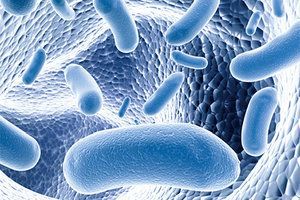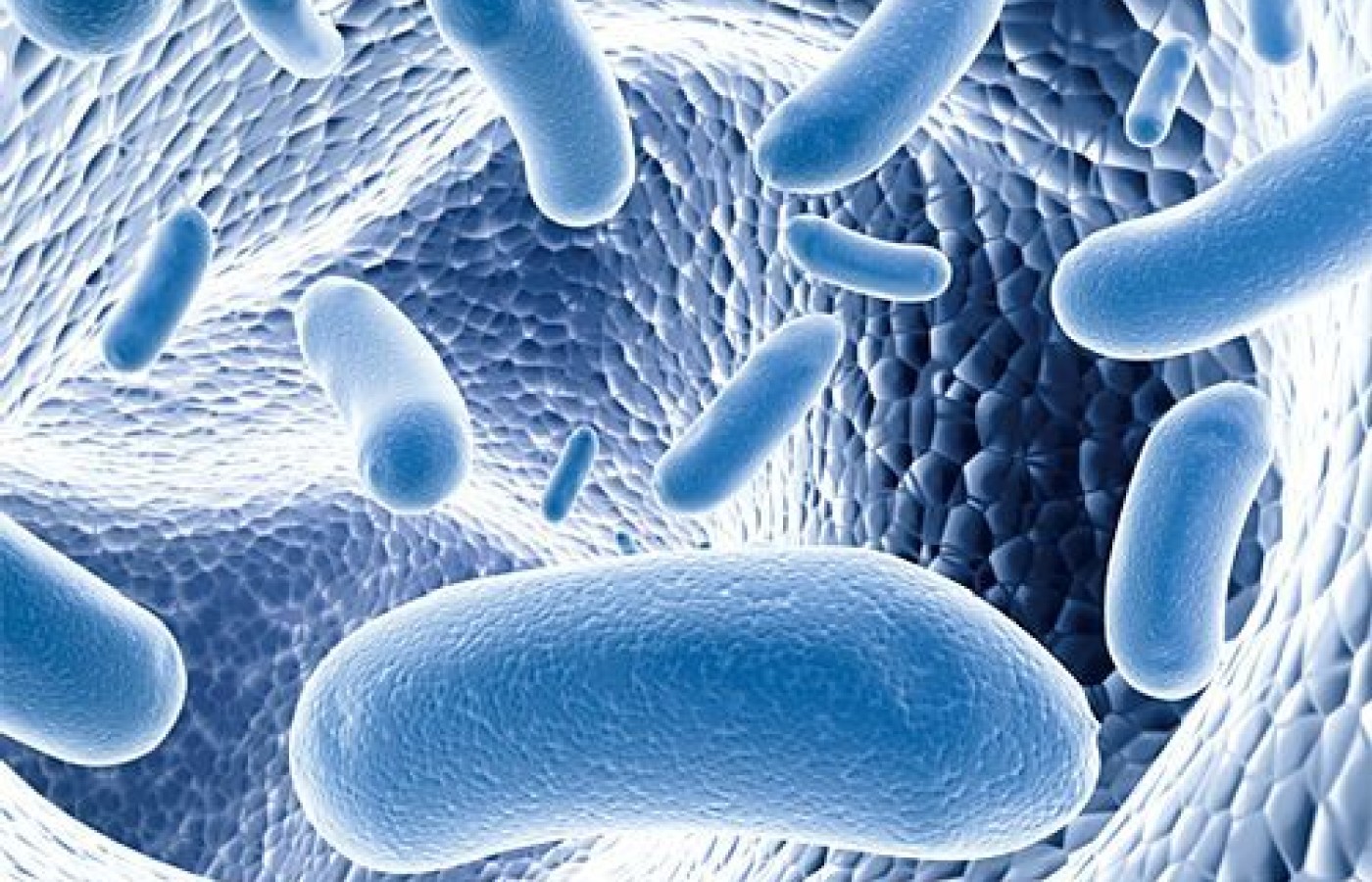Recent laws in New Jersey and California represent a disturbing trend that will negatively impact a practice’s ability to collect monies from patients, as well as expose them to significant penalties if the practice does not follow the mandatory guidelines to a T. Please be aware that a similar law may be coming to your state. The time to act is before the law is passed.
Healthy Bacteria: Understanding This Foundational Food
It's been called "Foundational Food" and is certainly regarded as a critical nutrient. Probiotics are not a luxury; in fact, they are a very essential nutrient that the human body requires for proper function. Recent advances in science have demonstrated how critical our beneficial bacteria are to our health and wellness and as it turns out, we count on them a lot more than previously thought. We are, in some ways, more bacteria than human!
There are 10 trillion cells that make up the human body, whereas there are more than 100 trillion beneficial bacteria cells that call our body home. There are 10 times more bacteria cells than human cells in and on an average person. It is very clear that there is strong co-evolution between the human host and our 100 trillion passengers as we have come to depend on them as much as they depend on us. Considering that our bodies and our genetics have not changed much in the last 200,000 years, we have to wonder where did our ancestors get their probiotics from? Surely they didn't have special coated capsules with billions of cells and refrigerators full of probiotic tablet options. So, how did they get these essential nutrients into their system where all this co-evolution occurred?

Scientists have studied this very topic and now have a clear understanding of where our distant relatives and us, picked up these important passengers. The first place is from mother. Mom does great things for us from the very start. Most of the beneficial bacteria found in the digestive tract come from our mothers, both when we are in the womb itself and during natural child birth. During the birthing process, the mother's bacteria passes onto the fetus and in fact is swallowed by the fetus and they end up colonizing the baby's digestive tract. Trillions of mom's good bacteria are transferred to her baby this way. Lactobacillus and Bifidobacterium species (commonly found in probiotic products) are among the strains passed from mother to child.
Physical contact with mom and breast feeding expose us to more beneficial bacteria that eventually make a permanent home on us and in us. This is where most of the beneficial bacteria that perform important functions in our digestive systems come from. These bacteria are designed to pass from mother to child during very, very close contact (i.e. the birthing process and breast feeding) as these strains of bacteria are not suited for life outside of the body. They are not designed to leave the body, spend time outside the body and be reintroduced orally. This is why many probiotics formulated with lactobacillus and bifidobacterium species have to be refrigerated to attempt to keep them stable. In fact, numerous studies have demonstrated that a large proportion of probiotic supplements using these strains in the market contain mislabeled strain counts and tend to have a high attrition rate through processing, shelf storage and certainly through the gastric system. (Gibson, G.R. et al 2005; Elliot, E. et al 2004; J.M, et al 1999; Hamilton-Miller, et al 1999)
The second way is through the environment. Our ancestors were hunters and gathers and they ate off the land. Much of the food and liquid they consumed was brimming with mega doses of environmental bacteria. Most of those bacteria died as they passed through the harsh gastric system (gastric barrier), but some didn't. These specialized strains developed an uncanny ability to survive in the outside environment and then pass through the acidic gastric system to end up thriving in the intestines – these became nature's true probiotics. With thousands of years of exposure to these specialized strains of commensal organisms, humans have actually come to require the presence of these strains for proper, healthy function of many of our biological systems. With this ability to live and reproduce in two very different environments (outside the body and inside the body), these strains are said to have a "biphasic" lifecycle. The most well-known, well studied and widely used biphasic probiotics are from the bacillus species. In particular, bacillus subtilis, bacillus clausii and bacillus coagulans; our modern sterilized food systems have all but eliminated these critical species from our diets.
Bacillus – The Original Probiotic
A simple literature search seeking published studies on the prevalence of the bacillus species will reveal the fact that bacillus seems to be a universal probiotic. Bacillus species are quite abundant in the environment and subsequently found as commensal, transient organisms in the gastrointestinal systems of mammals, insects, invertebrates, birds, marine life and even reptiles. Although they have always been classified as "soil organisms," studies are starting to reveal that they are actually digestive tract organisms that use the soil as a vector for transfer from host to host and they have been doing this for thousands and based on some strong evidence, for even millions of years.
Further research into the prevalence of bacillus species in the prehistoric periods reveals that bacillus species even pre-date early humans before the Paleolithic era. Certainly, early humans such as homo-habilis and homo-erectus were abundantly exposed to bacillus, but the data suggests that perhaps even dinosaurs enjoyed the probiotic benefits of this amazing species. The earliest identification of bacillus on earth was published by Vreeland R.H., et al (2000) in the journal Nature. The researchers were able to isolate and then grow viable bacillus cells from a brine inclusion within a 250 million-year-old salt crystal from the Permian Salado Formation.
The second earliest identification of bacillus published in the literature was by Cano R.J., et al (1995) where the researchers isolated and identified a viable bacillus species from the abdominal contents of extinct bees preserved for 25 to 40 million years in buried Dominican amber. This finding is significant in two respects. First, that bacillus was found to be present 25 to 40 million years ago and second, that bacillus was found in the gastrointestinal system of the extinct bee – evidence of ancient probiotic function!
Moving forward on the time scale, Gilichinsky et al. (2008) published research showing the identification and characterization of bacillus species in Siberian and Antarctic permafrost samples dating back three to five million years old. Besides the age, it is significant to note that bacillus has managed to span the globe from pole to pole – this further shows evidence of its abundance in the early earth environment including the period of human evolution. Further, Christner B.C., et al (2003) isolated and characterized bacillus species from ancient glacial ice-cores of the Qinghan-Tibetan plateau in Western China dating back 750,000 years old. This period in time is a crucial time for human development from homo-erectus to homo-sapiens and sure enough, bacillus was present.
Moving further ahead, Christner B.C., et al (2000) published a more in-depth analysis of microbial existence in various locations and age range of ice-cores ranging from five to 20,000 years old from China, Bolivia, Peru, Greenland and Antarctica. The researchers found bacillus to be abundant in all samples spanning all the regions and periods tested. Further, significance of their findings were that they identified bacillus subtilis specifically in all samples and time periods and were able to compare the genomic make-up of the ancient samples to validated bacillus subtilis genome of today – the researchers found 90% and greater homology between the current and ancient strains. Considering that bacteria mutate and replicate very quickly, it is amazing to think that this species (bacillus subtilis) has remained the same for tens of thousands of years. This indicates that the organism is supremely adapted to its environment and function as a transient gastrointestinal microbe and there are no selection pressures favoring a new genotype.
Among the most interesting findings on the prevalence of the bacillus species, is the work of Horneck, G. et al (1994) on the survival of bacillus subtilis in space. The researchers demonstrated that bacillus subtilis was able to survive in space for six years despite the harsh radiation, vacuum, temperatures and other conditions that typically do not support life. In fact, Horneck, et al. and other scientist postulate that bacillus endospores are the most likely candidates to support the Panspermia hypothesis that life exists throughout the universe, distributed by meteoroids, asteroids, comets and planetoids by interstellar and interplanetary collisions. Studies show that bacillus subtilis is able to survive an interplanetary lithopanspermic journey. This outlines the possibility that not only is bacillus a probiotic (meaning "for life"), but perhaps the source of life itself on our planet.
Bacillus species and Bacillus subtilis have functioned as probiotics since life spawned on this earth and certainly throughout the time that humans evolved. We have a highly ordered co-evolution with the species as is demonstrated by their function in the human GI and the molecular specificity with which they interact with human cells. We share genetic material with them for human cellular protein synthesis and we are dependent on them for the proper development of our immune system.
A number of studies have shown that bacillus subtilis plays a key role in the tutoring/training of the immune system and in mitigating a systemic pro-inflammatory and autoimmune state. We rely on them for proper digestion and assimilation of our food and we need them to detoxify our highly exposed gastrointestinal system. They produce more than 24 different antibiotics in vivo that help defend our GI from invading species and even over-growth of our own bacteria. Lastly, we count on them for the production of key nutrients (i.e. vitamins, enzymes, carotenoids, lipids, etc.) right at the sites of absorption where we experience the highest bioavailability. They are not a luxury in a healthy lifestyle, they are a necessity. They are truly "Foundational Food" that our ancestors co-evolved with to bring us to our evolutionarily most fit genotype and phenotype. A true probiotic should be formulated with nature's original probiotic strains, bacillus, to support the trillions of beneficial bacteria passed down from mother to child.



